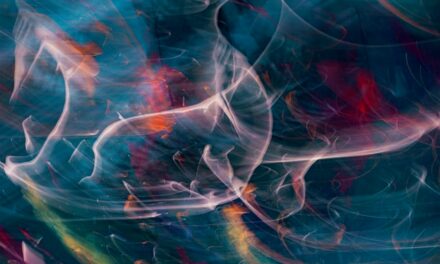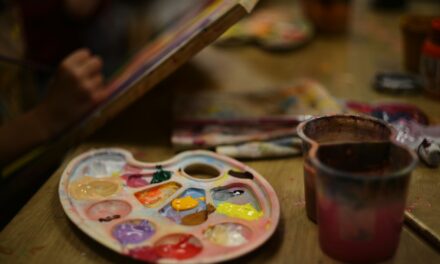Calligraphy, the art of beautiful writing, has captivated individuals for centuries with its elegant strokes and intricate designs. This ancient practice, which dates back to the earliest forms of written communication, has evolved into a modern art form that continues to inspire artists and enthusiasts alike. When combined with the fluidity and vibrancy of watercolour, calligraphy transforms into a stunning visual experience, allowing for the creation of unique and personalised artistic cards.
The interplay between the structured beauty of calligraphy and the organic nature of watercolour creates a harmonious balance that can evoke emotion and convey messages in a visually striking manner. Watercolour, with its translucent layers and soft blending capabilities, complements calligraphy beautifully. The gentle washes of colour can enhance the written word, adding depth and dimension to the overall composition.
This combination not only elevates the aesthetic appeal of cards but also allows for a personal touch that can be tailored to any occasion. Whether it’s a heartfelt message for a loved one or an invitation to a special event, the fusion of calligraphy and watercolour opens up a world of creative possibilities, inviting artists to explore their imagination and express their sentiments in a visually captivating way.
Summary
- Calligraphy and watercolor can be combined to create beautiful artistic cards
- The materials needed include calligraphy pens, watercolor paints, watercolor paper, and a mixing palette
- Basic calligraphy techniques such as letter formation and spacing are essential for creating artistic cards
- Watercolor techniques like wet-on-wet and dry brushing can add depth and texture to the cards
- Tips and tricks for combining calligraphy and watercolor include using a light pencil outline and practicing on scrap paper first
Materials Needed for Combining Calligraphy and Watercolor
Quality Paper: The Foundation of Calligraphy
The foundation of any calligraphy project begins with high-quality paper. Watercolour paper is ideal due to its thickness and ability to absorb moisture without warping. A cold-pressed or rough texture can add an interesting tactile element to the finished card, while hot-pressed paper offers a smoother surface for more precise lettering. Additionally, choosing paper in a size that suits your design is crucial; A5 or A6 sizes are popular for cards, providing ample space for both writing and painting.
Selecting the Right Tools for Calligraphy
Next, one must select the right tools for calligraphy. A variety of nibs and pens are available, each offering different line qualities and styles. For beginners, a dip pen with a flexible nib can create beautiful strokes, while brush pens provide a more accessible option for those who may be intimidated by traditional tools. In terms of ink, it is advisable to use waterproof or water-resistant ink to prevent smudging when watercolour is applied.
Watercolour Supplies: The Essentials
As for watercolour supplies, a basic set of watercolour paints—either in tubes or pans—along with a selection of brushes in various sizes will suffice. A palette for mixing colours and a container for water are also essential to facilitate the painting process.
Basic Calligraphy Techniques for Artistic Cards
Before diving into the world of artistic cards, it is essential to grasp some fundamental calligraphy techniques. One of the most important aspects of calligraphy is mastering the basic strokes that form the foundation of each letter. Practising these strokes will help develop muscle memory and control over the pen or brush.
Common strokes include upstrokes, downstrokes, and curves, which can be combined to create various letterforms. It is advisable to start with simple alphabets, such as italic or modern calligraphy styles, which are more forgiving for beginners. Once you feel comfortable with basic strokes, you can begin forming letters and words.
Consistency in size and spacing is key to achieving a polished look. Practising on lined paper or using guidelines can help maintain uniformity in your lettering. Additionally, experimenting with different styles can lead to discovering your unique voice in calligraphy.
Whether you prefer a classic serif font or a more whimsical script, finding your style will enhance the overall aesthetic of your artistic cards.
Watercolor Techniques for Artistic Cards
Watercolour painting offers an array of techniques that can elevate your artistic cards beyond simple washes of colour. One popular method is wet-on-wet painting, where wet paint is applied to wet paper, allowing colours to blend seamlessly into one another. This technique is perfect for creating soft backgrounds or ethereal effects that complement calligraphic text beautifully.
Conversely, wet-on-dry involves applying wet paint onto dry paper, resulting in sharper edges and more defined shapes—ideal for adding details or creating bold accents. Another technique worth exploring is layering or glazing, where multiple transparent layers of colour are applied one over another. This method can create depth and richness in your artwork, allowing for intricate designs that catch the eye.
Additionally, incorporating salt or alcohol onto wet paint can produce unique textures and patterns that add an element of surprise to your cards. By experimenting with these various techniques, you can discover how watercolour can enhance your calligraphy and contribute to the overall composition of your artistic cards.
Combining Calligraphy and Watercolor: Tips and Tricks
When merging calligraphy with watercolour, there are several tips and tricks that can help ensure a successful outcome. One crucial piece of advice is to allow your calligraphy to dry completely before applying any watercolour. This prevents smudging and maintains the integrity of your lettering.
If you’re using non-waterproof ink, consider writing your text first in pencil as a guide before going over it with ink once you’re ready to paint. Another helpful tip is to plan your design beforehand. Sketching out your layout on scrap paper can help you visualise how the calligraphy and watercolour will interact on the card.
Consider the placement of text in relation to painted elements; sometimes, allowing negative space around your lettering can create a more balanced composition. Additionally, don’t be afraid to experiment with colour palettes that resonate with the theme of your card—whether it’s soft pastels for a wedding invitation or vibrant hues for a birthday card.
Design Ideas for Artistic Cards
The possibilities for design when combining calligraphy and watercolour are virtually limitless. For instance, you might consider creating floral motifs as a backdrop for your text; delicate blossoms painted in soft watercolours can frame your message beautifully while adding an organic touch. Alternatively, geometric shapes filled with bold colours can provide a modern contrast to elegant lettering, making for an eye-catching card design.
Another idea is to incorporate seasonal themes into your cards. For example, autumn leaves painted in warm hues can complement heartfelt messages during the fall season, while snowflakes rendered in cool blues and whites can evoke winter wonderland sentiments. You could also explore abstract designs where freeform watercolour washes serve as a canvas for your calligraphy—this approach allows for spontaneity and creativity without strict adherence to traditional forms.
Personalising Artistic Cards with Calligraphy and Watercolor
Personalisation is at the heart of creating meaningful artistic cards. Calligraphy lends itself beautifully to this endeavour; customising messages with names or special dates adds an intimate touch that recipients will cherish. Consider using different styles of lettering for names versus messages—this contrast can create visual interest while still maintaining harmony within the design.
In addition to text, incorporating personal elements through watercolour can further enhance the card’s significance. For instance, if you’re creating a card for someone who loves gardening, consider painting their favourite flowers alongside their name in calligraphy. Alternatively, if it’s a birthday card, you might include elements like balloons or cake rendered in vibrant colours that reflect the celebratory spirit.
By weaving personal touches into both the calligraphy and watercolour aspects of your card design, you create a unique piece that resonates deeply with its recipient.
Creating Beautiful Artistic Cards with Calligraphy and Watercolor
The fusion of calligraphy and watercolour presents an exciting opportunity for artists to explore their creativity while crafting beautiful artistic cards. By understanding the materials needed and mastering basic techniques in both disciplines, anyone can create stunning pieces that convey heartfelt messages in an aesthetically pleasing manner. The interplay between structured lettering and fluid colour allows for endless possibilities in design, making each card not just a means of communication but also a work of art.
As you embark on this creative journey, remember that practice is key; don’t be discouraged by initial challenges but rather embrace them as part of the learning process. With time and experimentation, you will develop your unique style that reflects your personality and artistic voice. Ultimately, combining calligraphy with watercolour not only enhances your artistic skills but also enriches the experience of giving and receiving cards filled with love and creativity—truly making each occasion memorable.
If you are interested in exploring more captivating creations, you may want to check out this article on captivating creations. This article delves into various artistic techniques and styles that can inspire your own artistic journey. It’s always fascinating to discover new ways to express yourself through art, and this article provides a great starting point for your exploration.
FAQs
What is calligraphy?
Calligraphy is the art of beautiful handwriting, often using a special pen or brush to create decorative lettering.
What is watercolor painting?
Watercolor painting is a technique of using pigments mixed with water to create a translucent and delicate style of painting.
How can calligraphy and watercolor be combined for artistic cards?
Combining calligraphy and watercolor involves using calligraphy to write a message or quote on a card, and then adding watercolor illustrations or backgrounds to enhance the overall artistic effect.
What materials are needed to combine calligraphy and watercolor for artistic cards?
Materials needed include watercolor paper, watercolor paints, calligraphy pens or brushes, water jars, paper towels, and a pencil for sketching.
What are some tips for combining calligraphy and watercolor for artistic cards?
Some tips include practicing calligraphy before working on the final card, using light pencil sketches for the watercolor design, and allowing the watercolor to dry completely before adding calligraphy.
What are some popular themes for artistic cards combining calligraphy and watercolor?
Popular themes include floral designs, landscapes, abstract patterns, and inspirational quotes. These themes can be adapted to suit various occasions such as birthdays, weddings, or holidays.


